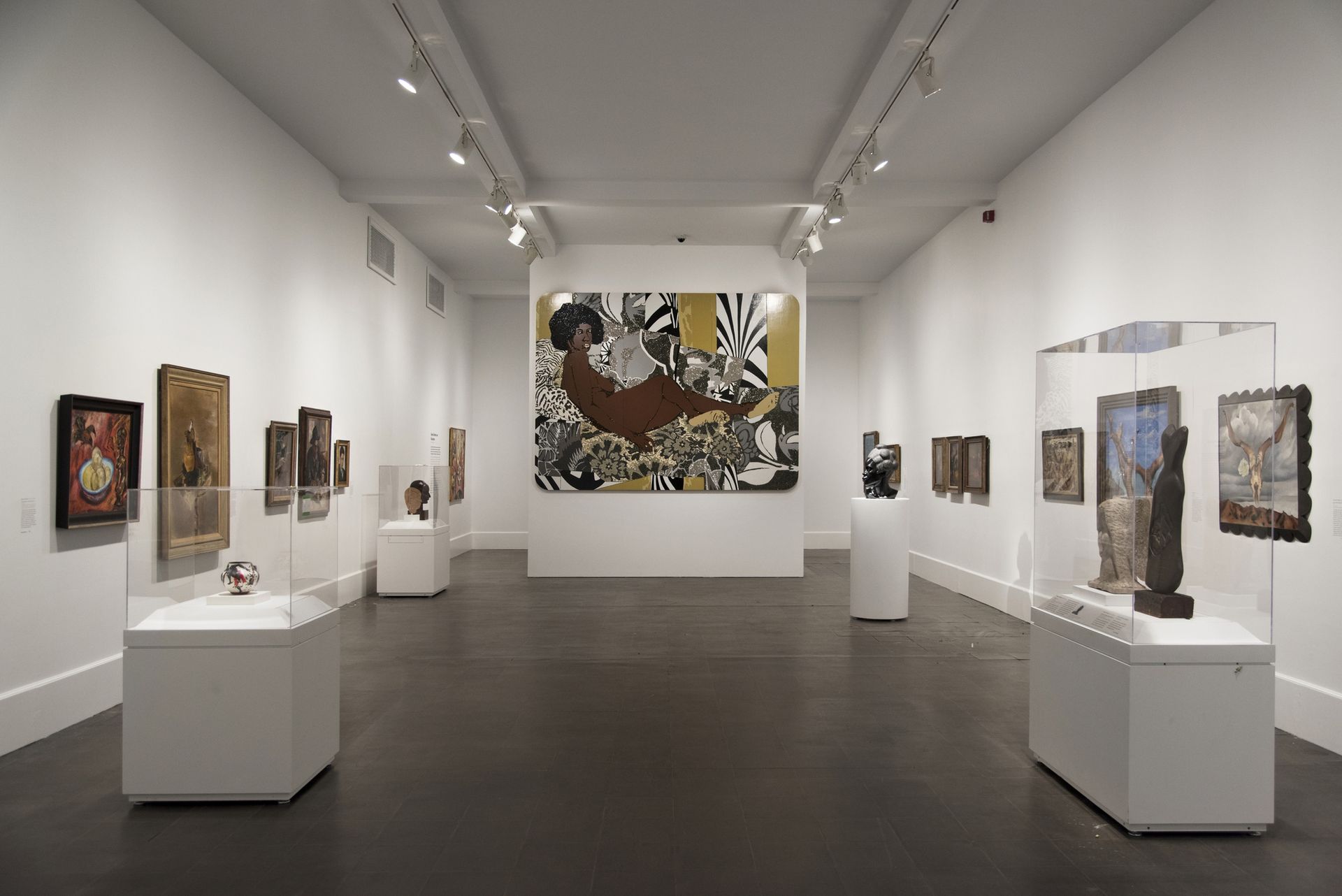Anne Pasternak, who took up the reins as the director of the Brooklyn Museum seven months ago, says she “wanted to see if a big institution could be nimble”. The museum has already re-installed the displays for three departments in its encyclopaedic collection—Egyptian, American and European art—the first rehang of permanent galleries in over a decade. “It’s very rare to have two encyclopaedic museums in one city,” Pasternak says, referring to the Metropolitan Museum of Art in Manhattan. “We get to be something different.”
The Egyptian collection is one of the museum’s strongest and most popular offerings, and two-thirds of the Egyptian galleries—which all together present over 1,600 objects—have been reworked. “For the first time, Egypt is positioned as Egypt in Africa,” says Kevin Stayton, the museum’s chief historian, and the new organisation looks at ancient Egypt’s relationship to the kingdoms of Nubia, for instance.
The faux architectural temple elements, which Stayton compared to a “circus atmosphere”, have been removed, as has an attention-grabbing Egyptian motif painted on a ceiling (of which Pasternak was not a fan). This allows the objects themselves to shine—such as the 350-pound quartzite Block Statue of Senwosret-senebefny (around 1836-1759 BC)—and also brings the galleries back to the open, classical proportions envisioned by the original architects McKim, Mead & White for the 1897 building.
The new display of the European gallery is also pared down. The guardrails are gone and there are 63 total works, 20% fewer than the previous hanging. This gives the pieces around the Beaux-Arts Court, like Goya’s Portrait of Don Tadeo Bravo de Rivero (1806) more room to breathe. However, a salon-style vertical hanging was chosen for a the high-ceilinged elevator lobby, which mixes works on paper by artists like Schiele and with paintings by artists including Cranach and Gauguin, and three Rodin sculptures at the front. The curator Richard Aste says the wall needed to be reinforced the day the works were installed.
The American galleries have been re-hung with a chronological and thematic presentation that follows the museum’s commitment to diversity, inclusivity and social issues. The galleries open with a pan-American presentation of Native American and Pre-Columbian art—why is it that “American art” sections do not always include Native American art? Pasternak points out—and other Native American pieces are displayed throughout, such as ledger drawings hanging on the same wall as an 1864 copy of the Emancipation Proclamation signed by Abraham Lincoln, on loan for three months from a private collector.
Sections explore historical moments like American artists visiting Europe after the Civil War and city life in the early 20th century. Mickalene Thomas’s large nude A Little Taste Outside of Love (2007) reigns over the last gallery in the suite, with the wide-ranging theme “Beyond Borders and Boundaries”. “Whoever you are,” Pasternak says, “you’re going to see your own history.”


